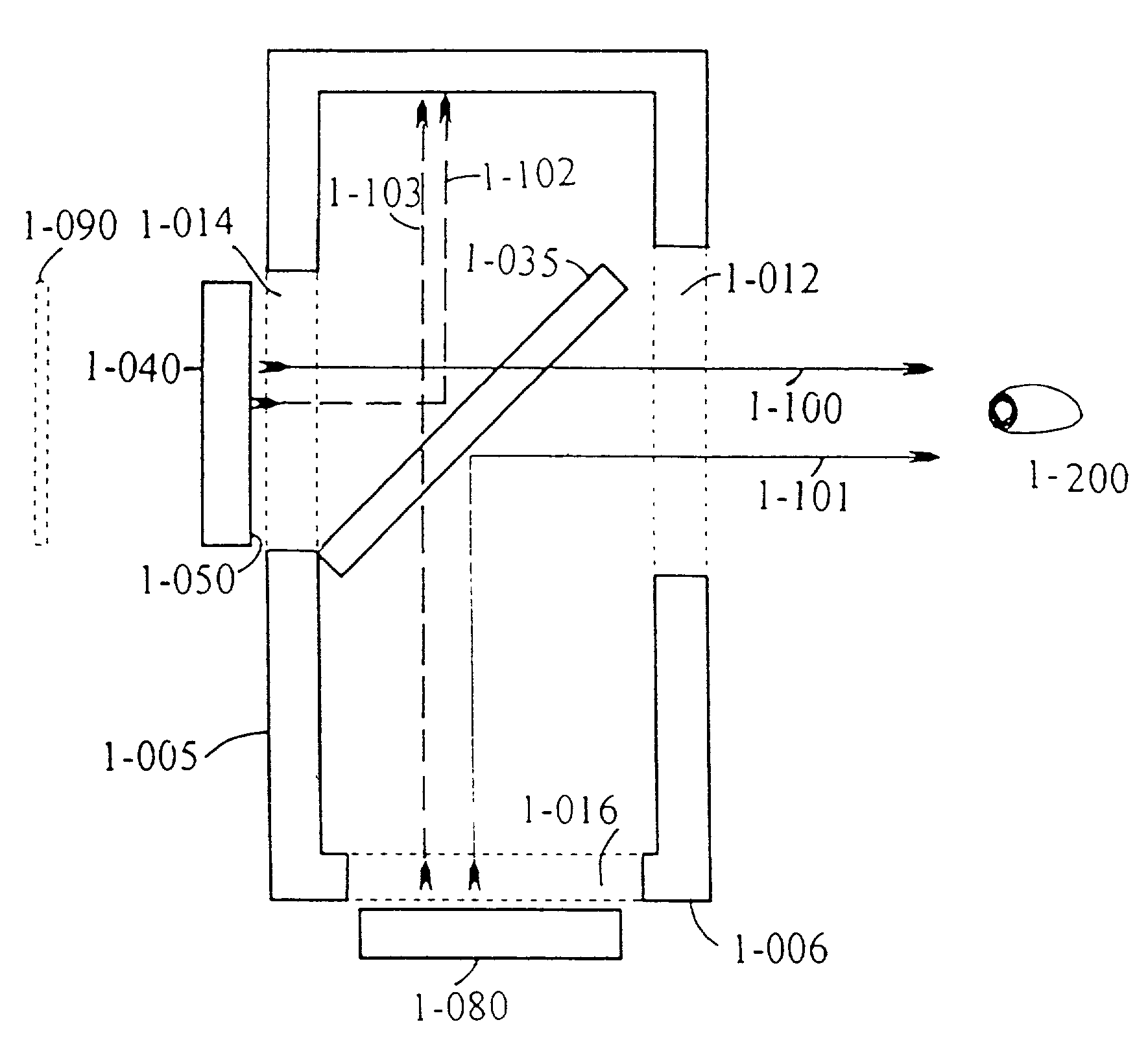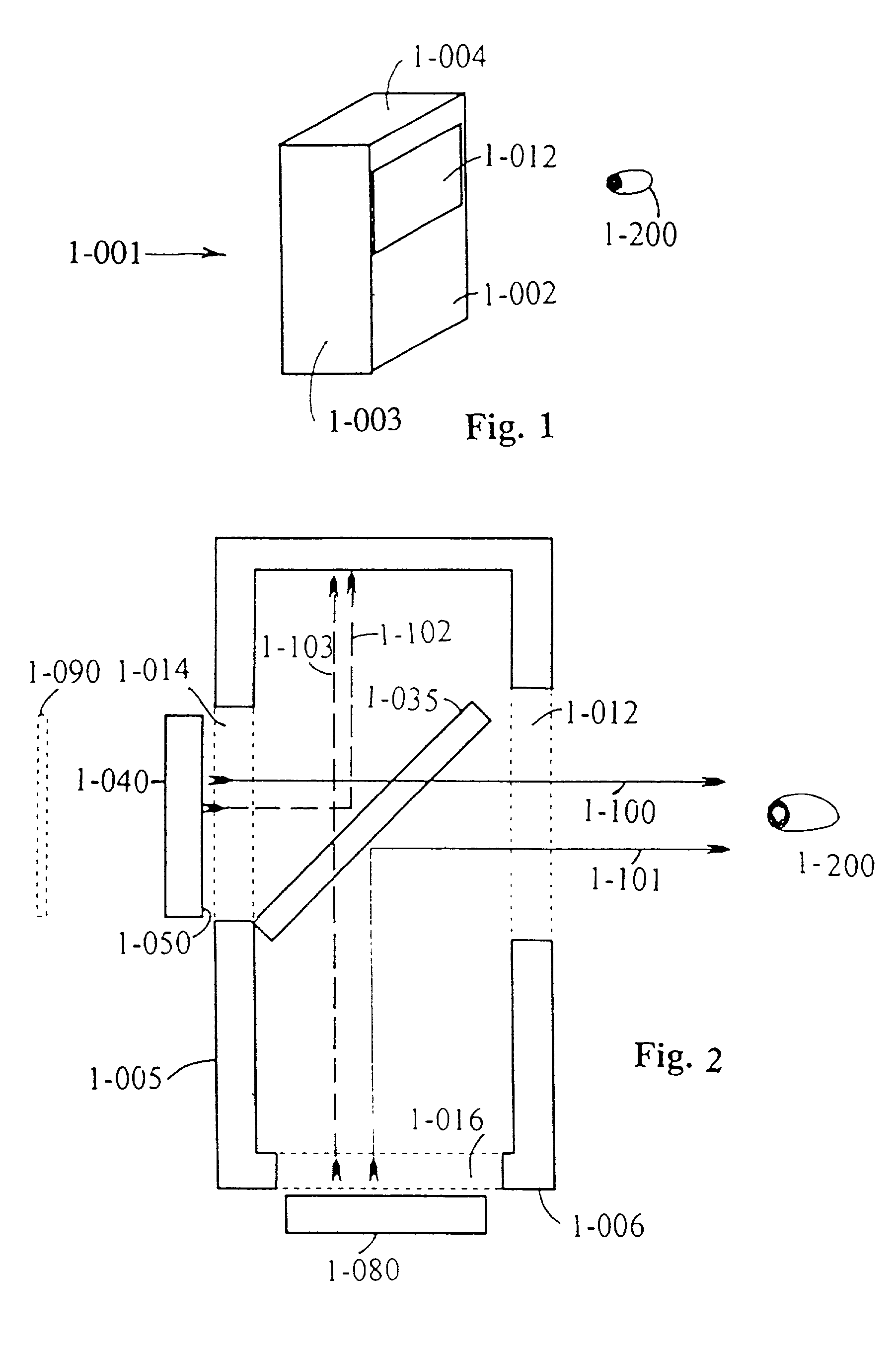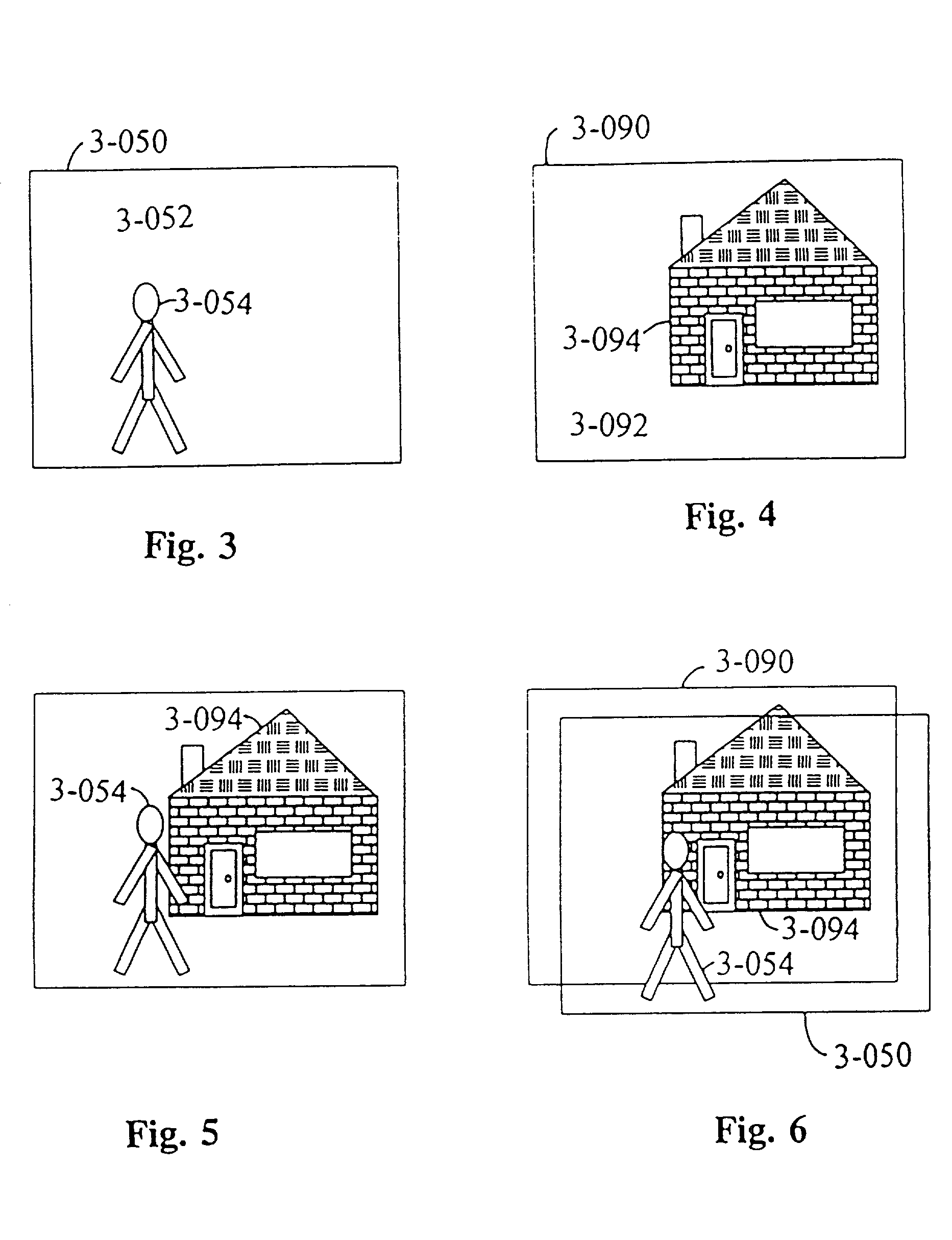Three-dimensional display system
a display system and three-dimensional technology, applied in optics, instruments, electrical equipment, etc., can solve the problems of dramatic decrease in efforts to develop other forms of 3-d, no satisfactory method for producing affordable 3-d imaging of acceptable quality, and no satisfactory method in the prior art for delivering 3-d images over conventional bandwidths. , to achieve the effect of less bandwidth, low cost and convenient us
- Summary
- Abstract
- Description
- Claims
- Application Information
AI Technical Summary
Benefits of technology
Problems solved by technology
Method used
Image
Examples
Embodiment Construction
[0188]Real-Depth 3-D Imaging
[0189]The present invention provides what may be termed real-depth imaging, since there are real differences in depth between images of objects in a scene. In accordance with the invention, different objects at different depths in a scene are presented in different planes in space, one behind the other. The object areas of each plane are perceived as opaque, and the non-object areas are clear to allow observation of the images in more distant planes.
[0190]The inventor's experimentation revealed that images created in only two planes provide a satisfactory real-depth experience. The inventor's discovery that only two images, projected in different planes, are needed to achieve a 3-D experience greatly simplifies from those of the prior art, the system necessary to produce such images. Moreover, the information content (i.e. the bandwidth) necessary to transmit such images is at a level which can be readily transmitted via a conventional TV channel or over ...
PUM
 Login to View More
Login to View More Abstract
Description
Claims
Application Information
 Login to View More
Login to View More - R&D
- Intellectual Property
- Life Sciences
- Materials
- Tech Scout
- Unparalleled Data Quality
- Higher Quality Content
- 60% Fewer Hallucinations
Browse by: Latest US Patents, China's latest patents, Technical Efficacy Thesaurus, Application Domain, Technology Topic, Popular Technical Reports.
© 2025 PatSnap. All rights reserved.Legal|Privacy policy|Modern Slavery Act Transparency Statement|Sitemap|About US| Contact US: help@patsnap.com



